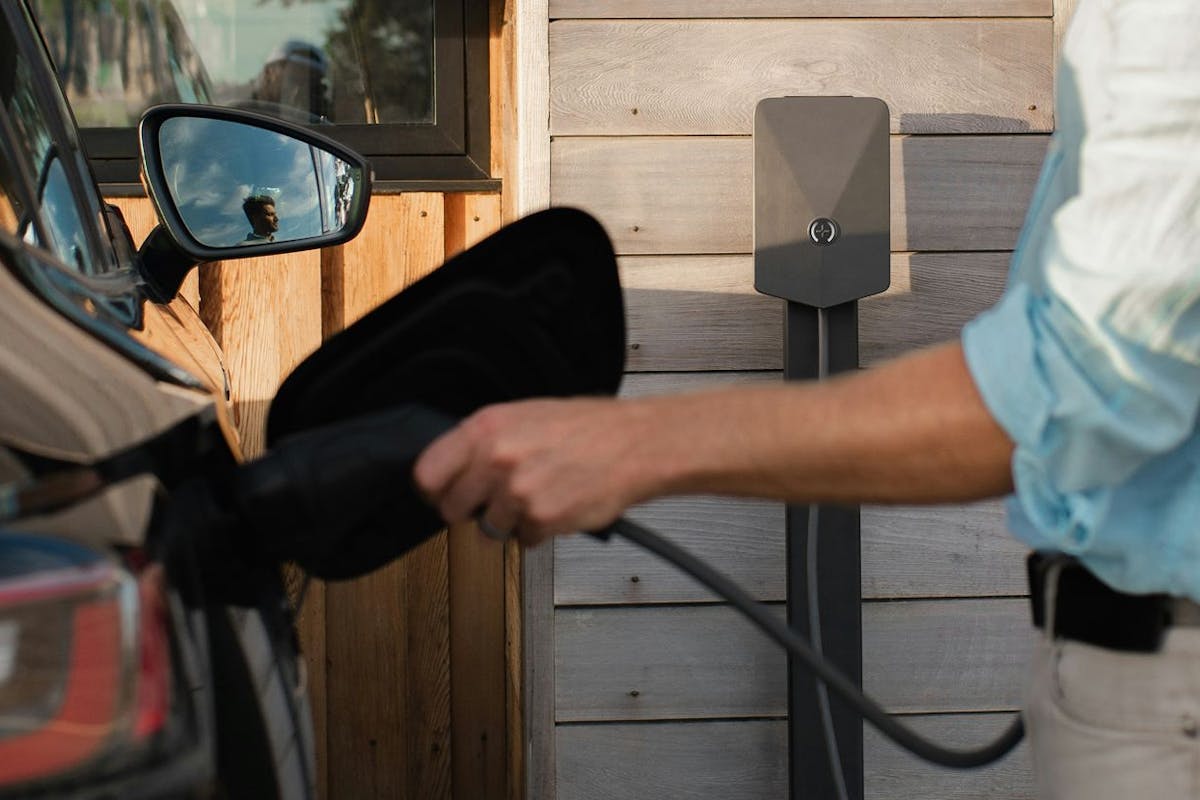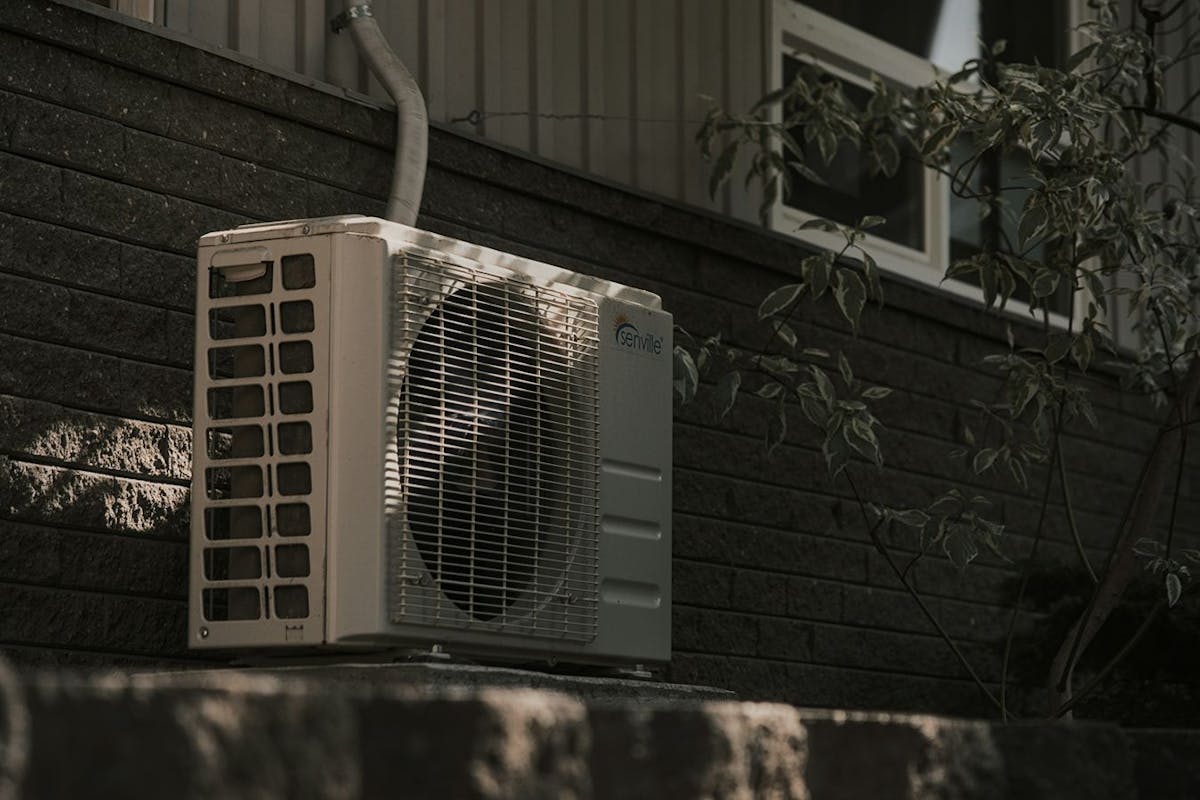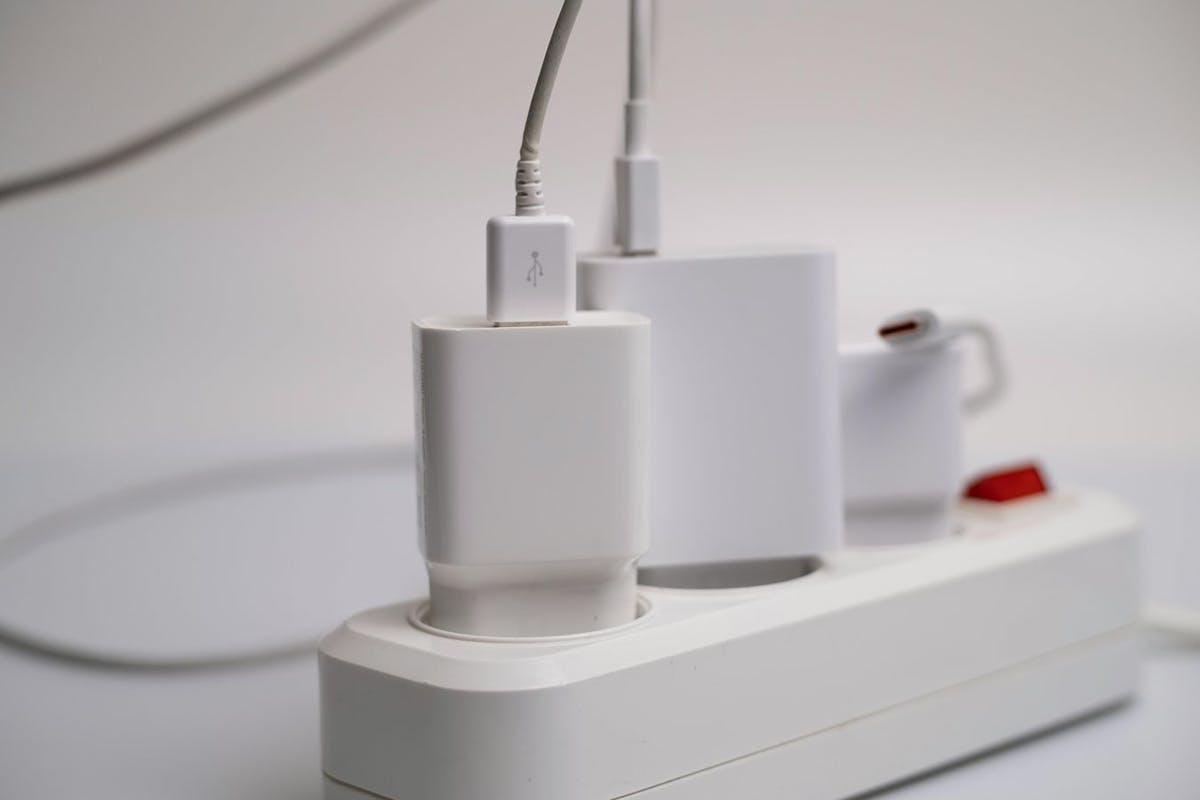Bidirectional EV Charging: Power for the Road and Home
Last edited

Author
Andrew Blok
Electrification and Solar Writer and Editor

Editor
Andrew Giermak
Solar and Electrification Writer and Editor

Just like the one-way grid of the past is giving way to a more flexible, responsive one, one-way EV charging might be on its way out, too.
EVs are efficient — and often cheaper overall! — ways to get around compared to internal combustion engine vehicles. But EVs have a lot of energy stored in their batteries when they’re not being driven, and that power could be put to use (assuming it's put back by the time the car is needed for transportation).
Enter bidirectional charging. With bidirectional charging and a compatible charger, an electric vehicle can provide backup power to a house, supply electricity to the grid, or power a specific device. It’s still an emerging technology, and not every electric vehicle is equipped to do it, but where it’s effectively deployed, it can have huge benefits.
See how much you can save with home energy changes
What is a bidirectional EV charger?
A bidirectional electric vehicle (EV) charger charges an electric vehicle and can send power from your vehicle back to your home or the grid. It enables the two-way flow of electricity to and from an EV.
Compared to traditional chargers that can only send power to an EV’s battery, a bidirectional charger allows EV owners to discharge electricity from their vehicle to use onsite, share, or sell.
How bidirectional EV charging works
Bidirectional EV charging works in several different ways that can benefit homeowners, travelers, businesses, the energy grid, and communities recovering from natural disasters.
Vehicle-to-home (V2H) and vehicle-to-building (V2B) charging
Vehicle-to-home charging, also known as vehicle-to-building charging, allows your EV to function as a backup generator for your home.
Whether the grid has a temporary power outage due to severe weather conditions, or utility rates are at their highest due to local demand, V2B and V2H chargers help you pivot from grid-supplied electricity and power your property with your vehicle’s battery reserve.
Vehicle-to-grid (V2G)
With the proper equipment and local utility agreements, bidirectional EV chargers may be used as vehicle-to-grid chargers. With V2G charging, power is exported from your EV’s battery reserve and sent to the electricity grid.
Vehicle-to-load (V2L)
Some vehicles have bidirectional charging capability built in that allows you to directly power home appliances, camping equipment, mobile workstations, large electronic devices, power tools, and more.
Unlike V2H and V2G charging, V2L does not require a bidirectional charger, as the EV uses an integrated inverter to send AC power directly to the device.
Vehicle-to-vehicle (V2V)
Some EVs can use stored power to charge another EV. It can be a useful feature if you need to rescue someone who’s run out of charge.
Vehicle-to-everything (V2X)
While the early iterations of bidirectional charging are designed to work with either your home, the grid, or a specific electric load, many manufacturers are looking to adapt their bidirectional charging systems to work with anything, integrating all of the bidirectional charging types into a single vehicle.
See how much you can save with home energy changes
Benefits of bidirectional charging
With vehicle-to-grid and vehicle-to-home technology, bidirectional EV charging delivers many financial and lifestyle benefits for homeowners and their communities.
Backup power
Energy resilience is perhaps the most important benefit of bidirectional EV chargers. With a backup source of electricity on wheels, bidirectional charging can help keep homes online during blackouts, or deliver power to areas in crisis after forest fires, hurricanes, or other disasters.
Demand response
Even if there is not an emergency, bidirectional EV chargers can help stabilize the supply and demand of the power grid for utilities.
To increase the energy supply during peak demand hours, electricity companies can incentivize EV owners to discharge their battery power in exchange for bill credits or real cash compensation. Virtual power plants operated by third parties are another way to participate in demand response and get compensated.
Optimized charging costs and energy savings
While managing the flow of electricity between your home, vehicle, and the grid, bidirectional EV chargers can decrease your energy costs. Especially when connected to a home solar energy system, bidirectional chargers make it easy to power your life with the cheapest possible electricity source.
For example, when you charge your EV with the excess energy produced by your home solar panels each day, you could then run your vehicle with the free and infinite power of the sun, export the clean electricity to your home, or send it to the power grid.
Portable power
While home backup batteries provide the savings and resilience benefits of energy storage in a fixed location, EVs equipped with bidirectional charging can do so on the go. Outside the limitations of battery range and your ability to recharge, an EV with bidirectional charging could be a versatile and mobile support in a lengthy outage.
Energy independence
Home solar panels represent one huge step away from reliance on your utility. A battery makes you even less so.
Whether that battery is stationary or mobile, it can help you avoid even more grid energy and help you better navigate power outages by backing up essential loads (like lighting, a refrigerator, or your Wi-Fi router).
What EVs have bidirectional charging?
Only some electric vehicles on the market today can support bidirectional EV charging. This list will change with time, so be sure to confirm your preferred EV matches your desired charging capabilities. Some capabilities may only be available for newer models and models that lacked these capabilities may have them unlocked later with an over-the-air software update.
| Electric Vehicle | V2L | V2H | V2G | V2V |
|---|---|---|---|---|
| Cadillac Lyriq | X | X | ||
| Cadillac Escalade IQ | X | X | ||
| Cadillac Optiq | X | X | ||
| Cadillac Vistiq | X | X | ||
| Chevrolet Equinox | X | |||
| Chevrolet Blazer | X | |||
| Chevrolet Silverado | X | X | ||
| GMC Sierra EV Denali | X | X | ||
| Ford F-150 Lightning | X | X | ||
| Hyundai Ioniq 5 | X | |||
| Hyundai Ioniq 6 | X | |||
| Hyundai Ioniq 7 | X | |||
| Tesla Cybertruck | X | X | ||
| Rivian R1 | X | |||
| Lucid Air | X | |||
| Nissan Leaf | X | |||
| Kia EV6 | X | X | ||
| Kia EV9 | X | X | X | |
| Volkswagen ID.4 | X | X | ||
| Honda Prologue | X | |||
| Genesis GV60 | X |
Finding the right bidirectional EV charger for you
Here are some factors to consider as you’re finding the right bidirectional charger.
- Compatibility: Not all EVs can be used for bidirectional charging. And not all bidirectional EVs work for every possible use case. Your home electrical system and setup may not be immediately compatible either. Some homes may need a dedicated 240V outlet installed.
- Your charging needs: What are the main uses you’re looking for in bidirectional charging? If it’s just powering your campsite, V2H charging likely isn’t necessary.
- Installation and specifications: Bidirectional chargers generally need upgraded 240V outlets. In some cases, electrical work such as a new electrical panel may be needed. Account for any extra work and expense as you’re shopping.
- Extra features: Some bidirectional EV chargers, have smart capabilities, scheduling functions, and automatic energy management.
Major bidirectional EV charger brands
There’s an increasing number of brands and models of bidirectional EV chargers. Here are some brands to look at.
- dcbel
- Enphase
- Wallbox
- Sigenergy
- SolarEdge
- Fermata
Bidirectional EV charger cost
Bidirectional chargers will cost more than one-way home EV chargers. They’re both more capable and complex, while also being less commonly sold and installed.
For example, to use your EV as a vehicle-to-home bidirectional battery, GM vehicles require a GM-specific charger (currently priced at $1,999) and a GM Energy V2H Enablement Kit (currently priced at $5,599). Those will also need to be installed by a licensed electrician.
As bidirectional charging becomes more common, prices could fall.
Bidirectional EV charger incentives
Home EV charging equipment may be eligible for federal tax credit of 30% up to $1,000 of the cost of the equipment, related components, and labor and installation. Eligibility is also based on location. The credit is available through June 30, 2026.
To learn more about the tax credit overall, see the Department of Energy’s information.
It’s also worth checking for local or utility-level incentive or rebate programs you may qualify for. You can contact your local utility or go to your utility’s website. You can also use a site such as N.C. State University’s Database of State Incentives for Renewables and Efficiency which gives a searchable list of state and local programs.
For more information on how to power your electric vehicle, check out our guide to EV charging. You can see how much you could save by going solar by using our solar savings tool and explore the impact of other home energy upgrades with Palmetto’s Energy Advisor.
See what home electrification can do for you:
Frequently asked questions
Which EVs have bidirectional charging?
Not all EVs have bidirectional charging as a feature. Chevy, Cadillac, Fisker, Ford, Genesis, Hyundai, GMC, Jeep, Kia, Lucid, Mitsubishi, Tesla, and Volkswagen have EVs with bidirectional charging capabilities.
Why do people want bidirectional charging?
Bidirectional charging can give EV owners and solar owners benefits such as energy savings, energy bill savings, backup power during outages, and energy options during high-priced periods.
How much does a bidirectional EV charger cost?
The price of a new bidirectional EV charger varies based on its features, capacity, and speed. You need to take compatibility into account, too. Bidirectional EV chargers range from about $850 to more than $10,000 depending on the other equipment required.
Disclaimer: This content is for educational purposes only. Palmetto does not provide tax, legal, or accounting advice. Please consult your own tax, legal, and accounting advisors.


